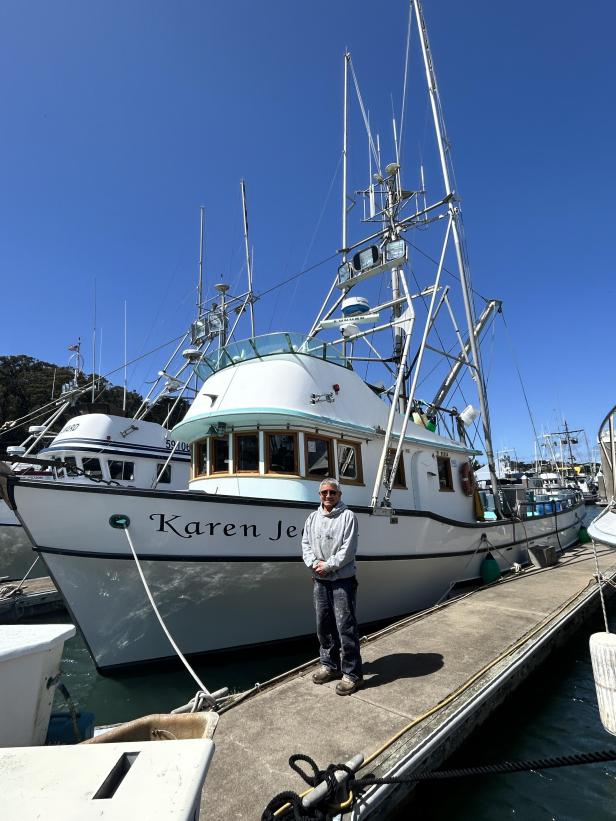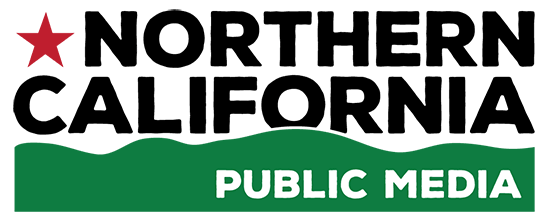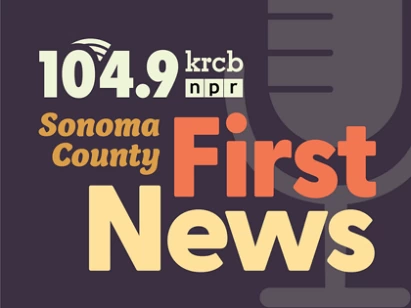 photo credit: Lauren Spates
photo credit: Lauren SpatesBodega Bay's Dick Ogg in front of his commercial fishing boat, the Karen Jeanne.
Sonoma County boasts 55 miles of coastline, a pristine ocean shore that supports booming recreational and commercial pursuits. An afternoon surfing, hiking or fishing requires knowing the wind speed, the wave patterns and the general weather, all of which could be affected by the Trump Administration’s cuts to the National Oceanic and Atmospheric Administration.
“You kind of have to be a weatherman to be a surfer,” said Sarah Molica Dougherty, owner of Northern Light Surf Shop. “We look at NOAA and a couple other things, we'll look at the BOON observatory and see what the winds are doing, what the swell is doing, the size, the direction, all of those things, and determine where is going to be the best, safest spot for taking someone that's brand new or intermediate, wherever that may be.”
Molica Dougherty said surfers like having data from the National Oceanic and Atmospheric Administration, but they don’t really need it.
“So basically, surfers, by nature, we like to look at the ocean, even if we see that the reading is terrible. Oftentimes people are like, ‘I just gotta see it.’ And so you'll drive out there, and you can kind of predict, from day to day what's happening,” she said.
Changes at NOAA might not affect Dougherty’s business that much, but the same can’t be said for Sonoma’s commercial fishing fleet. Working anywhere from four to 150 miles offshore depending on the season, captains like Dick Ogg need precise readings about the waves and weather.
“The distance between the swell and the height of the swell is what you don't want to get into. You want a bigger separation and a lower swell. You can fish and you can maneuver through a big separation, but you can't when it's short and tight,” he said.
Ogg says he reviews swell-related data each morning in the cabin of the Karen Jeanne, his 54-foot fishing boat docked in Bodega Harbor. He opens his laptop and tabs between multiple websites including Windy and Ventusky to check wind speed and wave timing, among other factors.
“Here is another forecast model. Here is another forecast model. And what I do personally is I begin to look at all of these and compare them and say, ‘OK, I'm seeing the same thing on all of these sites. Therefore it's probably okay, it's probably right.’ You know?” Ogg said.
According to Brian Garcia, Warning Coordination Meteorologist with the National Weather Service office in Monterey, there’s a reason Ogg isn’t seeing much difference between sites.
“The U.S. federal government runs all sorts of model data, and because it's funded by taxpayers, none of it is proprietary, none of it's held internally,” he said. “All the forecasting that we do, it all goes out to the world…so that other companies can pick it up, repackage it, and do what they want with it.”
The models Garcia is talking about include the HERR, or High Resolution Rapid Refresh, and the NAM, or North American Mesoscale — the country’s two major regional weather models.
The HERR calculates its input data every 15 minutes and offers hourly updates. It forecasts roughly three days out. The NAM runs every six hours, so four times a day, also for a roughly three-and-a-half-day forecast with hourly projections.
These two models form the basis for the graphics users see on Windy and Ventusky.
Both the HERR and the NAM rely on data collected at buoys like the one anchored in 127 meters of water about 14 miles off the coast of the Bodega headlands. That buoy records wind speed and gusts, air and sea temperature and pressure, and wave height and period.
According to Garcia, there haven’t been any significant changes in the last few months to the HERR or the NAM but the Trump Administration’s cuts to NOAA’s budget will affect the global buoy network.
“And so now, when we're talking about buoys being defunded, buoys not being replaced, that puts our commerce at risk. And so our acting NOAA administrator recently spent some time with the National Data Buoy center, and she has a good grasp of what it means to have data out over the open waters, and she knows it's important, and the Secretary of Commerce also knows it's important, and they've both talked about it openly,” Garcia said.
Commercial fishing captains like Dick Ogg agree, and not just because reliable forecasting affects his bottom line.
“My life depends on what I see on this computer. At this time in my life, I really don't want to have to fight bad weather, but the main thing I'm concerned about is my crew,” he said. “They're young people, they are relying on my judgment to get them income and bring them back home safely. And I'll be damned if I'm gonna take a chance with that.”
Ogg doesn’t want to see the federal workforce cut, especially when it comes to NOAA.
“I mean, it's very important to me, and if they're a little bit bloated, I'm sorry, you know? That's okay, you know?” he said. “I mean, I need this service, I really do, and I think we all have become accustomed to that.”

 Live Radio
Live Radio




